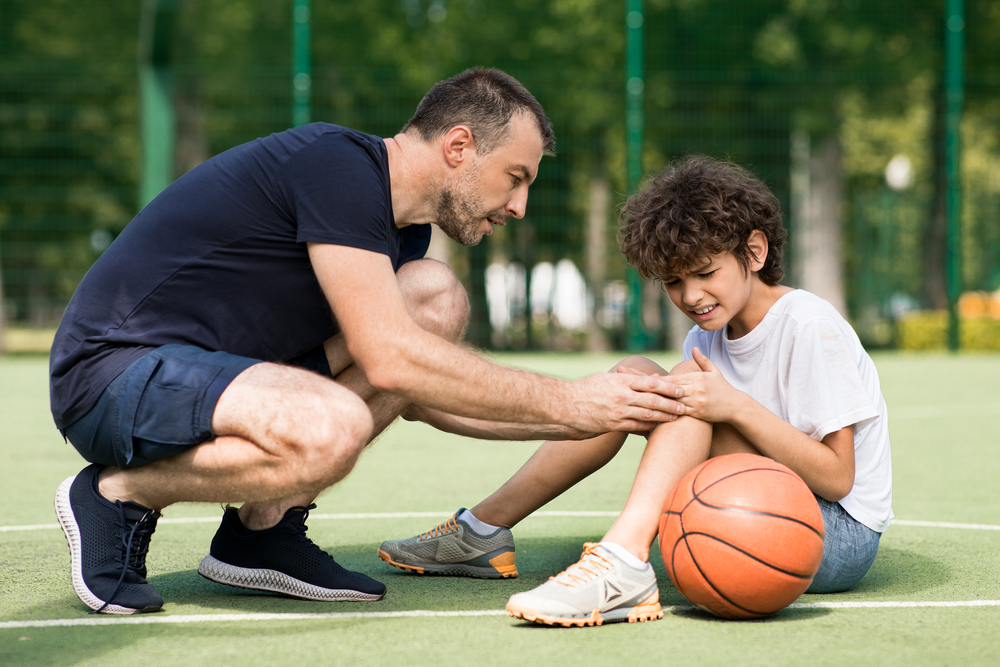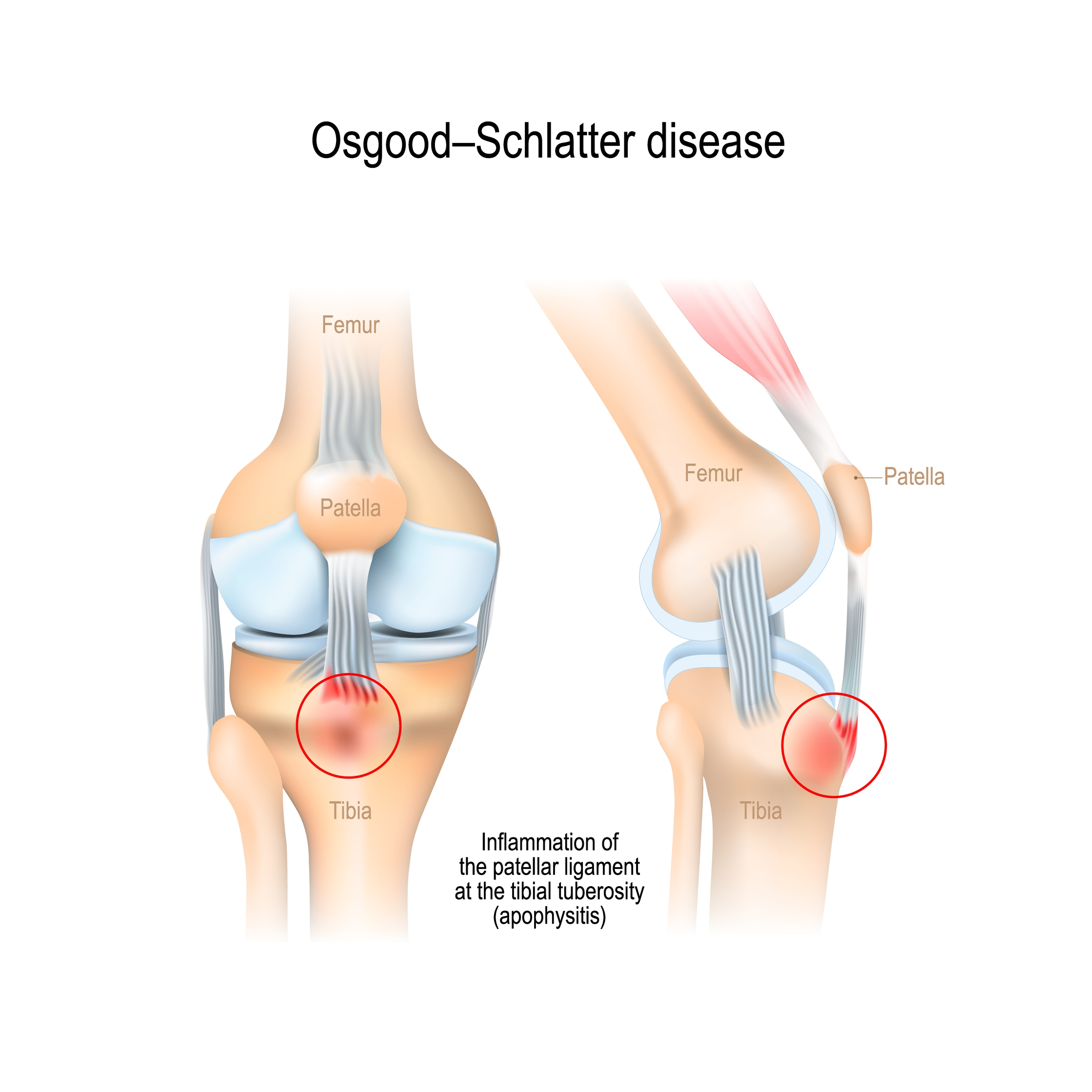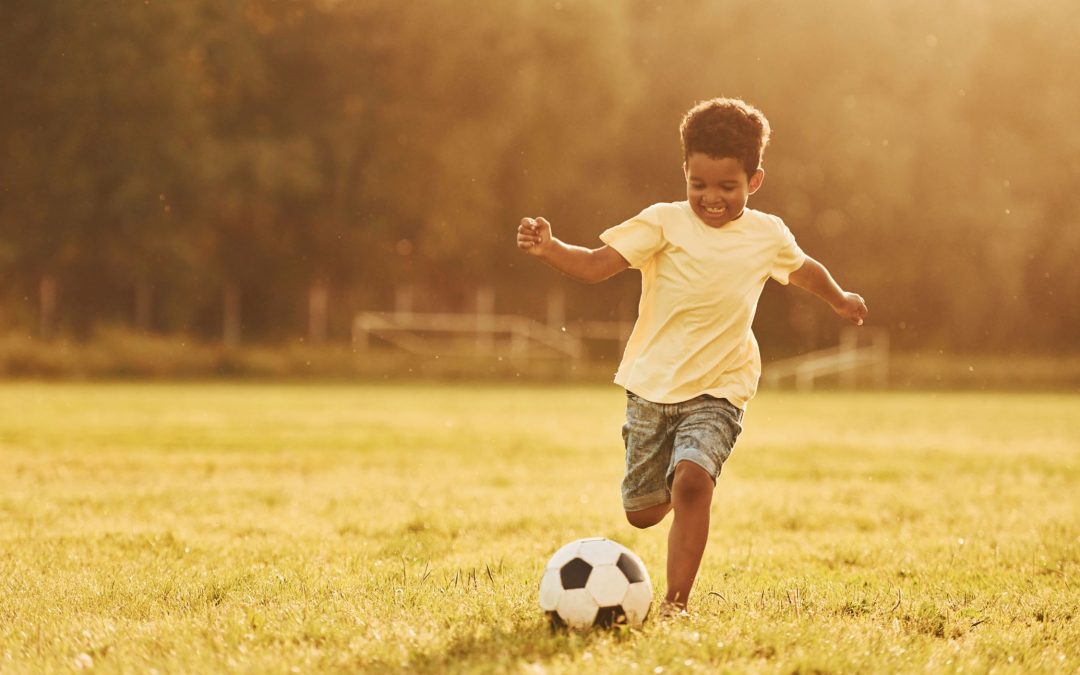Children who are active during growth spurts may experience knee pain that seems to be worse when they’re exercising and having fun.
Osgood-Schlatter disease (OSD) usually occurs due to the high load and intensity of certain sports such as gymnastics, running and soccer which then leads to an increase in stress on the joints and surrounding muscles. We understand this condition can be painful and frustrating as children want to stay active and play sports. Fortunately, there is plenty that we can do to help manage Osgood-Schlatter and to alleviate their symptoms.


What causes this type of knee pain?
Osgood-Schlatter disease is an overuse injury where during rapid growth, the thigh bone lengthens faster than the muscles and its tendons.
This condition doesn’t happen in adults because their muscles end in a tendon which attaches to bone. Children are still growing, so their tendons attach to soft cartilage plates on the bone.
Repetitive loading of the muscle during sport can then cause this cartilage to be vulnerable to excessive pulling and leads to inflammation of the growth plate on the lower leg just below the knee cap.
When are children are usually affected?
- Boys aged 11-15; girls aged 8-13
- During or after a growth spurt
- When participating in sports involving running, jumping or kicking.
Common symptoms of Osgood- Schlatter disease
- Knee pain at or below the kneecap which is worse during or immediately after activity
- Knee pain with repetitive bending or when sitting with the knees in a bent position
- Improved symptoms with rest or a reduction in activity load
- No memory of specific injury to the knee
- It hurts to press the shin bone below the knee, or to kneel
How long will this knee pain last?
- Symptoms of OSD can last for 6-12 months and are often worse over a period of rapid growth
- Complete recovery occurs once the long bones stop lengthening and closure of the growth plate
- We will manage your child’s symptoms over this time so they can continue to participate in their sports and activities.
How can you help ease their pain at home?
- Relative rest from the activity/exercise they are participating in – guided by your physiotherapist to manage their exercise load and facilitate a quicker recovery
- Ice +/- anti-inflammatory medication if needed
- Stretching the leg muscles recommended by your physiotherapist
- Bracing/taping of the patella tendon.
We want to keep your child playing sports and participating in the activities they love.
Why should I consider seeing a physiotherapist for my child’s knee pain?
We will help guide you to manage your child’s activity load with the aim of reducing pain, improving function and aid in a quicker return to sport. We will always try to keep your child playing the sports they love. Sometimes we do encourage reducing activity levels or creating modifications for a few weeks until the pain reduces, and your child is no longer experiencing significant pain or a limp.
We typically will provide exercises to assist your child to improve their range of motion and strength to help manage their current sporting load. If your child is complaining of knee pain, book an appointment with one of our physios. We will provide a thorough assessment and active management plan to reduce the severity of pain and avoid recurrence in the future.
Posted 8 November 2024

